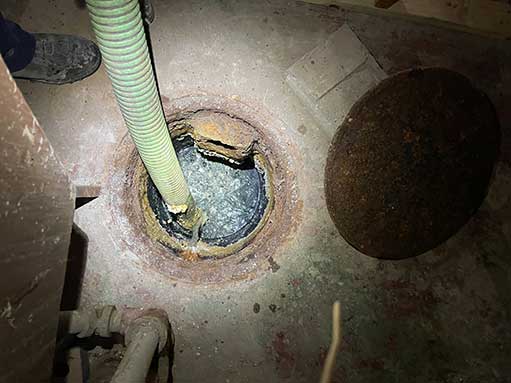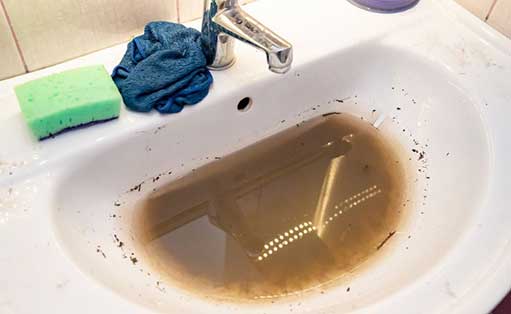Understanding the Potential Consequences
Sewage backup is an unfortunate and unpleasant situation that can occur in any residential or commercial property, including Albany Park. The consequences of sewage backup can be severe, ranging from property damage to health risks. It is crucial to take immediate action when faced with this issue to mitigate the damage and protect the well-being of those residing or working in the affected premises.
The Health Risks of Sewage Backup
Sewage backup is not only a messy inconvenience but also poses significant health risks. The sewage contains various pathogens, bacteria, and viruses that can cause illnesses and infections. These health hazards include but are not limited to gastroenteritis, Hepatitis A, and E. coli infections. Additionally, prolonged exposure to sewage backup can lead to respiratory issues, skin irritations, and allergic reactions. Therefore, prompt action is necessary to avoid exposing individuals to these health risks.
Property Damage and Financial Implications
Apart from the health risks, sewage backup can cause extensive property damage and result in significant financial implications. The sewage water, if left unattended, can seep into walls, floors, and furniture, causing structural damage and decay. This may lead to mold growth, which further exacerbates the situation and poses health risks of its own. Additionally, valuable items such as electronics, furniture, and personal belongings can be irreversibly damaged by the contaminated sewage water. Taking immediate action can minimize property damage and help mitigate financial losses.
The Importance of Professional Assistance
Dealing with sewage backup requires professional expertise due to the complexity of the situation and the potential health hazards involved. It is crucial to contact a reputable sewage cleanup company in Albany Park to ensure the proper handling and remediation of the issue. Professionals have the necessary equipment, experience, and training to handle sewage backup emergencies effectively and safely. Attempting a DIY approach without the appropriate knowledge and equipment can lead to further property damage, health risks, and inadequate cleanup.
Immediate Actions to Take
When faced with sewage backup in the Albany Park area it is important to take immediate action to minimize the damage and health risks. Here are the essential steps to follow:
Evaluate the Situation
Assess the extent of the sewage backup and identify the areas affected. Make note of any valuable items that may have come into contact with the sewage water.
Ensure Personal Safety
Put on protective gear, such as gloves, masks, and rubber boots, to minimize the risk of exposure to harmful bacteria and pathogens in the sewage water.
Turn Off Electrical Power
In situations where sewage water has entered electrical outlets or appliances, it is crucial to turn off the electrical power to prevent the risk of electric shock. Do not handle electrical switches or outlets if you are standing on wet surfaces.

Once the professional sewer cleaning team arrives, they will assess the extent of the damage and begin the necessary cleanup and restoration procedures. This typically involves extracting the sewage water, drying the affected areas, sanitizing surfaces, and removing any damaged materials.
Contact a Professional Plumber in Albany Park
Immediately get in touch with a professional plumber in Albany Park to assess the situation and initiate the cleanup process. Do not attempt to handle the sewage backup on your own, as it requires professional expertise and equipment.
Document the Damage
Take photographs or videos of the affected areas and damaged personal belongings for insurance purposes. Documenting the damage will assist with the claims process and ensure accurate reimbursement.
Begin the Cleanup Process
Once the professional sewer cleaning team arrives, they will assess the extent of the damage and begin the necessary cleanup and restoration procedures. This typically involves extracting the sewage water, drying the affected areas, sanitizing surfaces, and removing any damaged materials.
Prevent Future Incidents
After the cleanup and restoration process is complete, take proactive measures to prevent future sewage backup incidents. This may include regular inspections of plumbing systems, proper disposal of waste, and installing backflow prevention devices.
Insurance Coverage
It is important to review your insurance policy to determine the extent of coverage for sewage backup incidents. Some homeowner’s insurance policies may include coverage for sewage backup damage, while others may require additional endorsements or separate policies. Contact your insurance provider to understand your coverage and file a claim as necessary.
The importance of immediate action when dealing with sewage backup in Albany Park cannot be overstated. The health risks, property damage, and financial implications associated with sewage backup necessitate prompt and professional intervention. By understanding the potential consequences, taking the necessary steps, and seeking professional assistance, individuals can minimize the damages and protect the well-being of themselves and their property.
—
